DKW 118cc 2-stroke single cylinder,
mounted on a bicycle
When Daimler installed a scaled-down Otto-motor in a wooden frame and added a front- and rearwheel, the "motorcycle" was born.
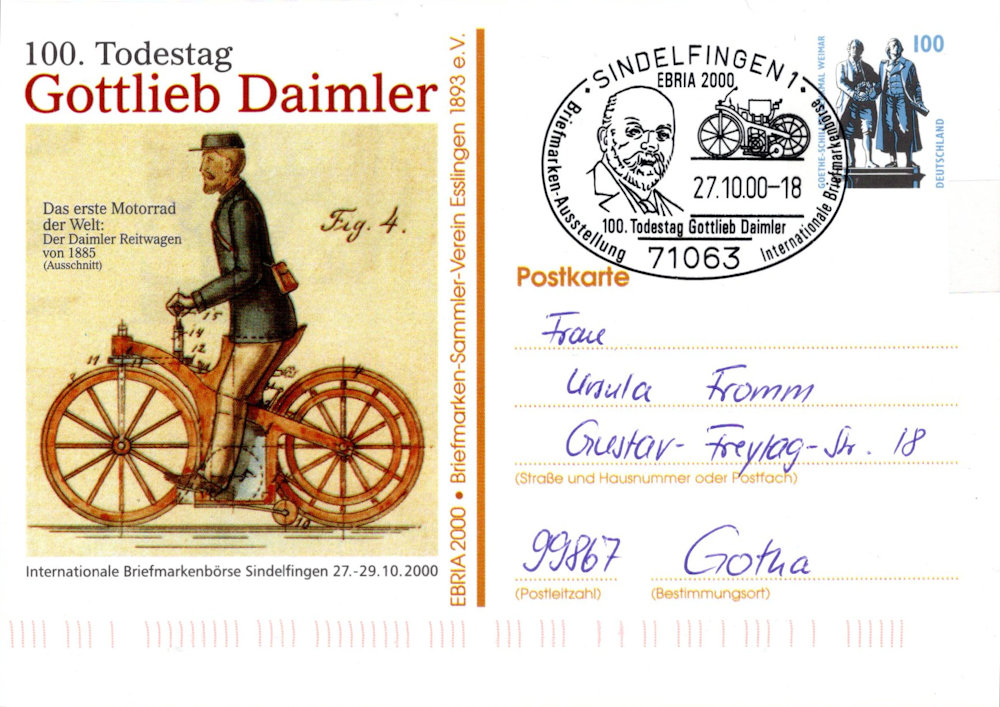
Soon after this many blacksmiths, bicycle repairers, and others began installing engines in bicycle frames. Hildebrand & Wolfmüller released the first production motorcycle in 1894. By 1897, several hundred had been built.
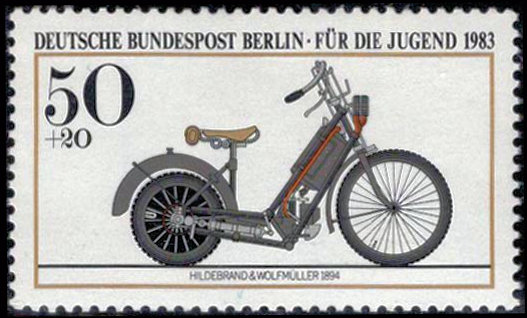
Motorcycle reliability improved in the following decades. The first major mass-producer of motorcycles was the American company Indian. Founded in 1901, it quickly became the largest motorcycle manufacturer in the world. Production increased to 60,000 units in 1914.
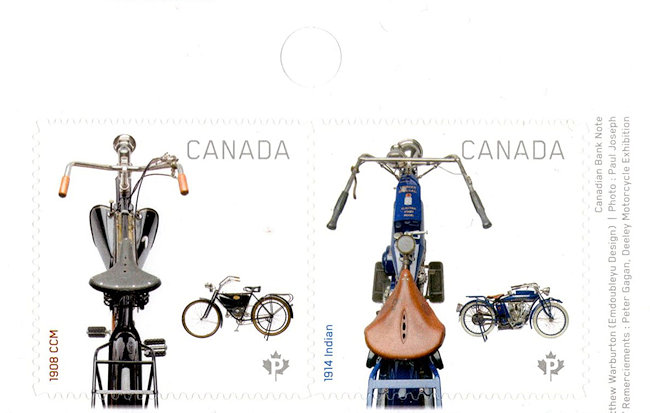
Stamps in a Canadian stamp booklet, with CCM 1908 and Indian 1914
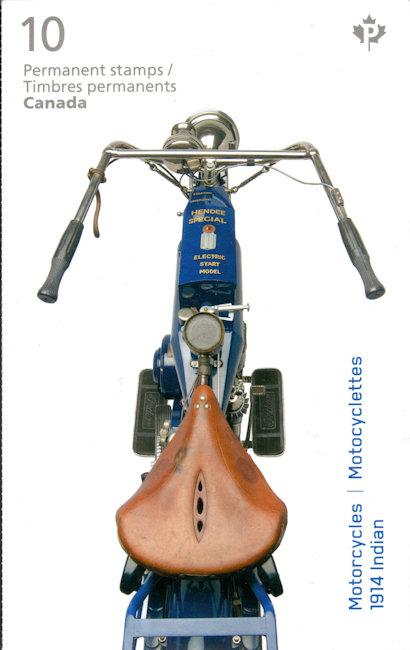
Cover of the Canadian stamp booklet with Indian 1914
What is less well-known is the development of auxiliary engines that could be attached to the handlebars of a bicycle, driving the front wheel. An example of this is the Austro-Motorette, developed by the collaborating companies Werke Arsenal from Vienna, which built the actual engine, and Steierische Fahrzeugwerke G.W.A. from Graz-Puntigam, which produced the remaining components.
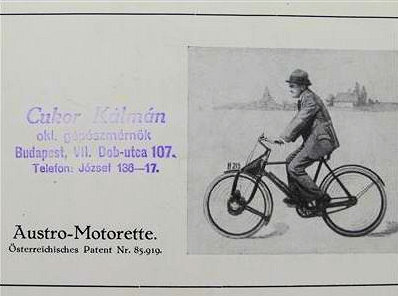
Advertisement for Austro-Motorette
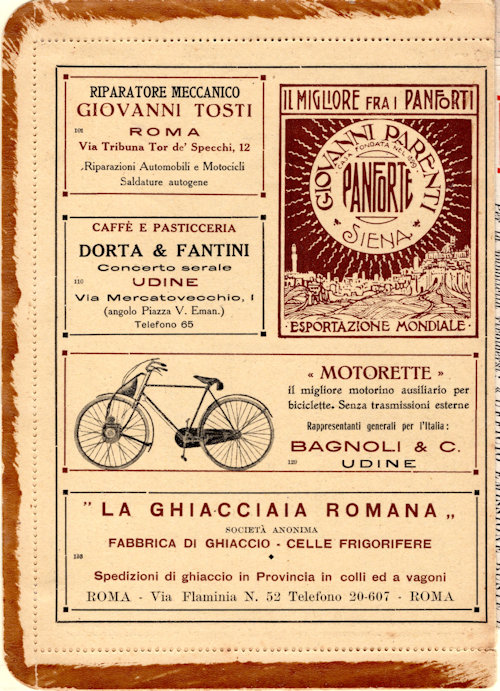
Busta Lettre Postale (BLP), available at a reduced rate thanks to advertising.
Additional proceeds from the advertising went to WWI war invalids.
It was a simple air-cooled two-stroke engine that produced 1 hp at 3,000 rpm. It had a unique ignition system, a magneto ignition where the ignition points were located in the cylinder instead of a spark plug. Closing the ignition points was controlled by a screw in the piston. It was built into the front wheel, and this wheel, along with a curved front fork that also held a mudguard and fuel tank, formed a complete drive unit that could be mounted on any bicycle.

The driving unit from Austro-Motorette
But Austro-Motorette was not the only one producing this kind of separate auxiliary engines.
To my great surprise, recently a card with advertising (in Dutch text) for a "bicycle insert engine" from Auto-Phoenix was offered on sale.
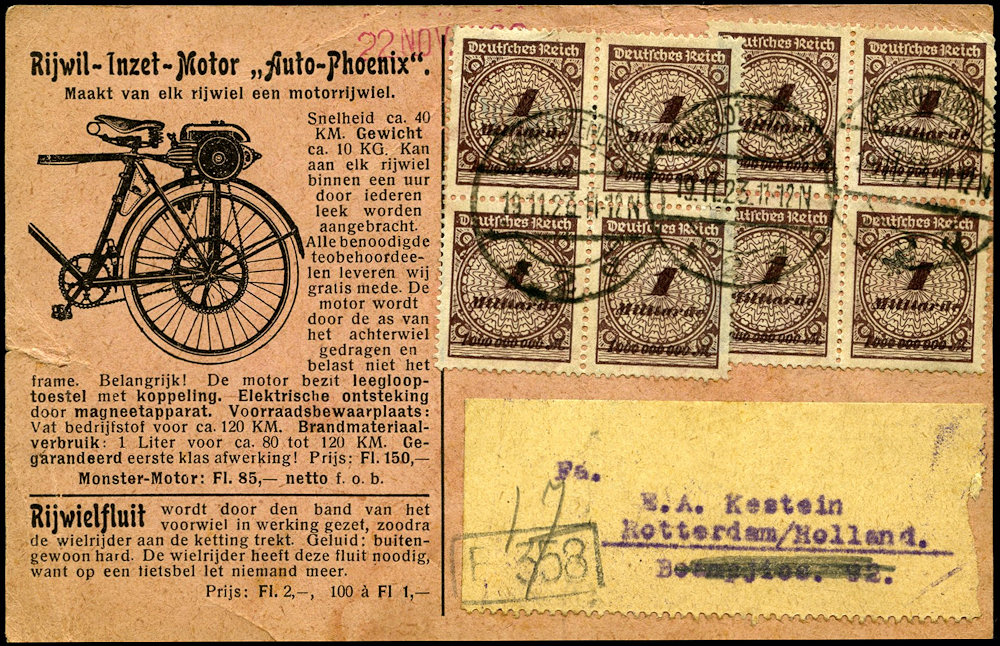
Front side of the offered card
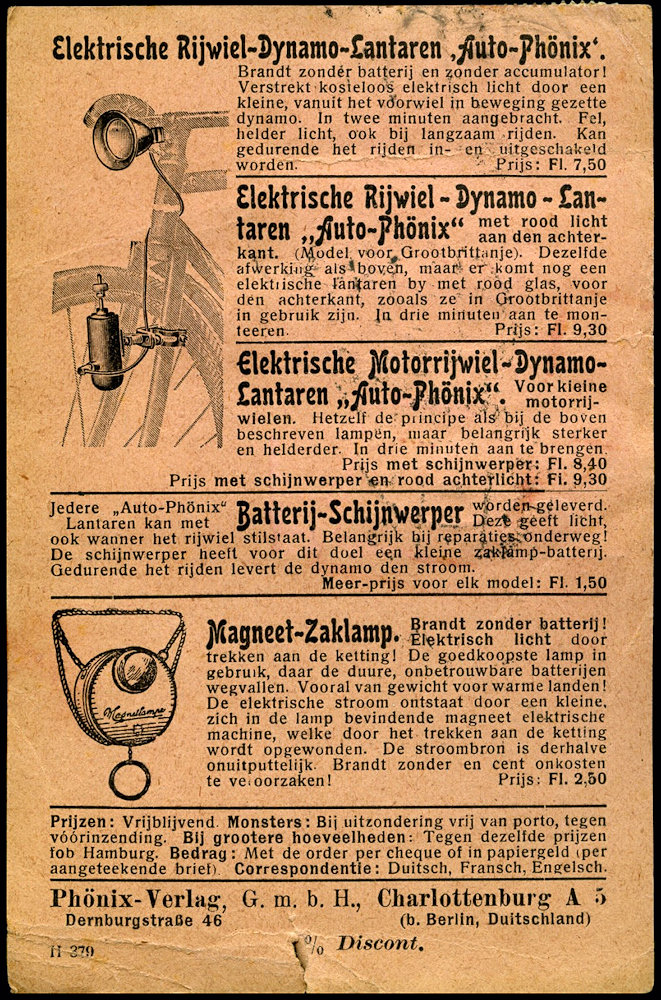
Back side of the offered card
After searching the global library that internet nowadays is, it turns out it was a DKW clip–on engine. In hindsight, the answer was much simpler and closer to home. For years, my (exhibition) collection has included a card letter from Germany with an advertising image of the sought-after motorcycle.
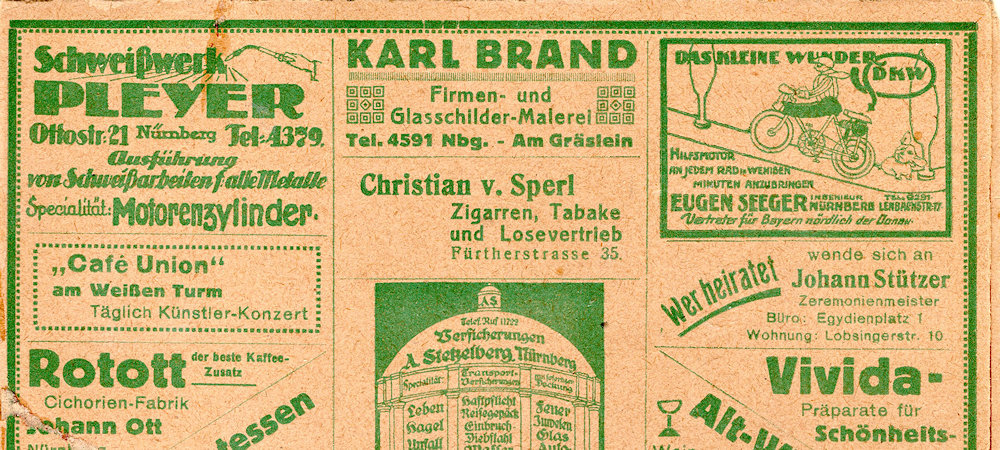
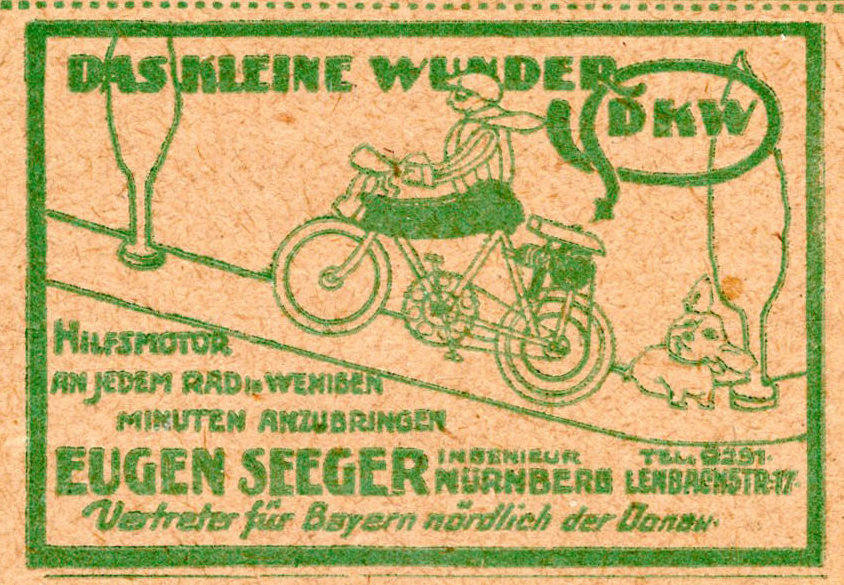
The history of DKW, the world's largest motorcycle manufacturer in 1929, began in 1919 with a 118cc clip–on bicycle engine. This bicycle engine could be mounted above the rear wheel of any standard bicycle and drove the rear wheel with a V–belt.
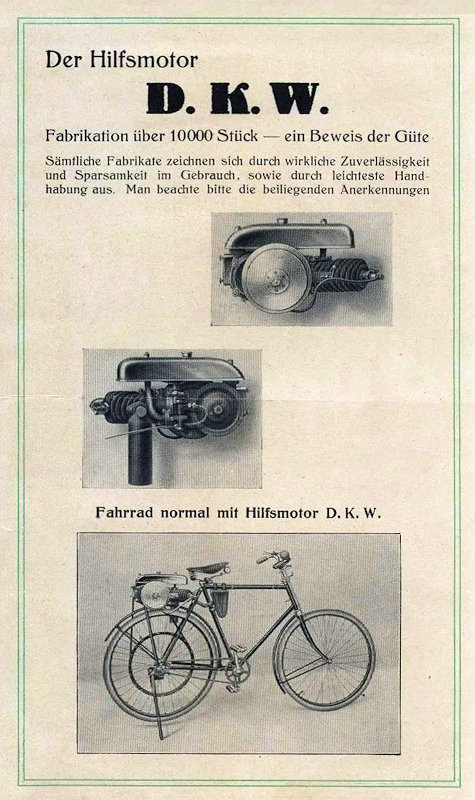
The rear wheel pulley is smaller than that of competing contemporaries, because the engine pulley is not mounted on the crankshaft but is driven via a 1:3 gear ratio. A floatless carburetor is used. Over the years, DKW has used various brands of carburetors, such as Tuto, Variat, and Adria. The ignition points are located outside the flywheel, under a cover at the rear of the engine. The ignition points are controlled by a pushrod and a shaft with three cams. Bore and stroke are 60x50 mm, and the engine weighs 14 kg. Due to the shape of the tank, with its embossed logo, the engine has been nicknamed "Bettflasche" in German, which translates to "hot water bottle." Another nickname, due to the engine's position, is "Arschwärmer" (literally "butt warmer"), which in Dutch is politely translated as "steak warmer."
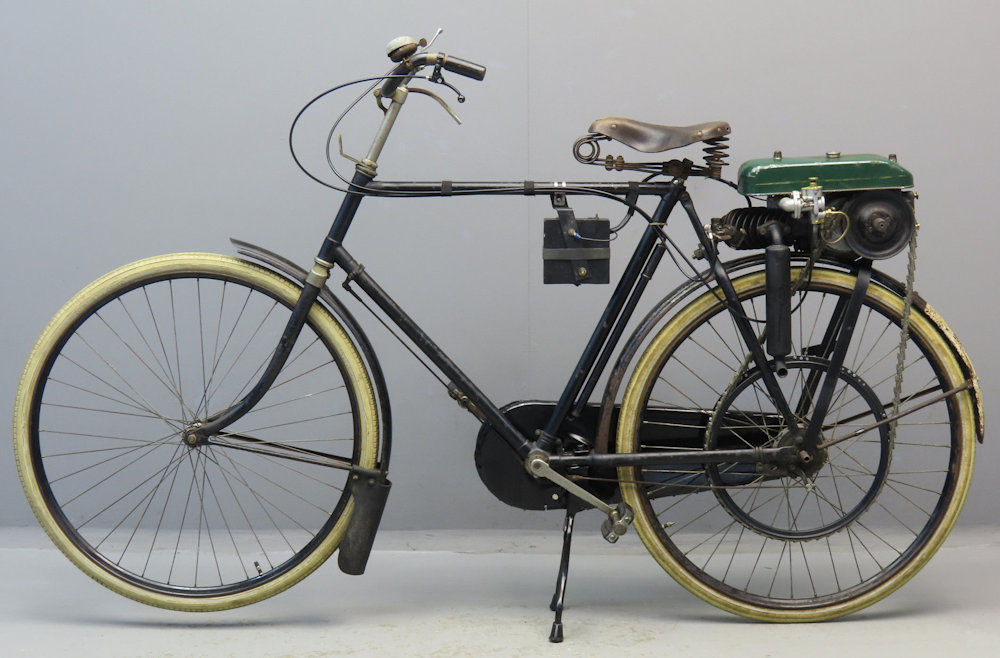
|
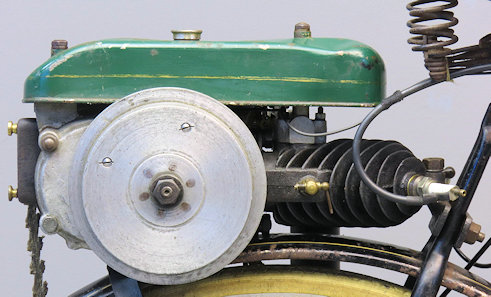 |
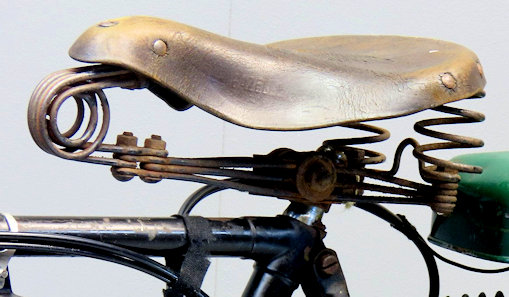 |
The bike on which this DKW auxiliary engine is mounted is a beautiful Gazelle, a high-quality Dutch product.
The original leather "Gazelle" saddle is still in place, as is most of the celluloid covering on the handlebars. |
DKW claimed a top speed of 40 km/h and the ability to climb a 10% slope without pedal assistance. This was advertised with the phrase: "DKW, Das Kleine Wunder, fahrt bergauf wie ein ander runter," which translates as "DKW, the little wonder, goes uphill just as fast as others go downhill" (note that DKW is an acronym of the German translation of "the little wonder"). The DKW bicycle engine was an immediate success. On June 17th 1922, the 20,000th rolled off the assembly line at Zschopauer Motorenwerke, and on February 15th 1924, the 50,000th.
Now the question to the real techies in our club: is the Solex a similar kind of "bicycle clip–on engine", or is this a "normal" bicycle with an auxiliary engine (moped)?
Nico Helling
Top - Back to former page - Home |














